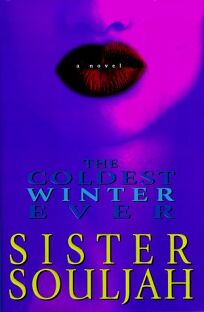In the vast landscape of contemporary literature, few novels resonate with such effulgent fervor as Sister Souljah’s “The Coldest Winter Ever.” This remarkable debut not only gains traction through its gripping storyline but unfurls a tapestry rich in themes of survival, loyalty, and the harsh socioeconomic realities that shape urban life. As readers embark on this narrative journey, the promise of a profound shift in perspective awaits them—one that beckons them to confront the tenebrous shadows lurking beneath the veneer of glamour and an ostentatious lifestyle.
At the heart of this narrative is Winter Santiaga, the audacious and fiercely defiant daughter of a famed drug lord. Her world brims with opulence and excess, gilded by her father’s illicit empire. Yet, beneath this gilded façade lies the stark reality of betrayal, love, and the relentless quest for identity. Winter’s journey is both enthralling and agonizing, compelling readers to jettison their preconceived notions and immerse themselves in her struggles and triumphs.
Sister Souljah deftly crafts a milieu that pulsates with authenticity. The author’s vivid descriptions audibly echo the pulsating rhythms of urban life, captivating readers with scenes that feel palpably real. The vivid portrayal of Brooklyn serves not merely as a backdrop but as a living entity that influences the narrative’s trajectory. Each street, each corner, is imbued with a story—a subtle reminder of the societal constructs that often dictate the destinies of its inhabitants.
From the outset, readers are thrust into a maelstrom of challenges alongside Winter. One of the novel’s most compelling aspects is its exploration of the dualities within her character. She is relentless—determined to seize the high life, yet haunted by the unsettling realities of her existence. Her father’s downfall serves as a poignant catalyst that spirals her life into a series of tumultuous events, thrusting her into the merciless grip of survival. Her transformation from a privileged girl to a desperate woman navigating the treachery of street life becomes a sine qua non of the narrative, and it is here that the analytical lens of the reader is truly sharpened.
The complexity of Winter’s character is masterfully juxtaposed against the backdrop of her relationships. The dynamics between her family members—the ambivalence of love, the searing pain of betrayal, and the poignant search for understanding—invite readers to reflect on their own familial bonds. As Winter grapples with loyalty and the overwhelming desire for acceptance, she becomes emblematic of a larger narrative that elucidates the intricacies of urban life where the lines between right and wrong are oftentimes blurred.
Moreover, the novel does not shy away from delving into the socio-political frameworks that govern the lives of its characters. As Winter traverses through the myriad challenges, the reader is subtly nudged to reckon with the pervasive issues of race, class, and systemic inequality that function as barriers to success. Sister Souljah’s incisive commentary is wrapped in an engaging narrative that both educates and entertains, evoking a sense of urgency to reevaluate societal norms.
As the narrative unfolds, moments of quiet introspection interlace with explosive confrontations, encapsulating the often chaotic essence of life. Winter’s resilience—tempered by her vulnerabilities—creates an emotional resonance that propels readers into a contemplative stance. The relentless pursuit of luxury juxtaposed against the stark realities of survival emerges as a dominant theme, compelling the audience to confront the moral dilemmas faced by those who navigate the fringes of society.
Furthermore, the interplay between ambition and consequences serves as a poignant reminder of the intricacies inherent in the human condition. Winter’s ambitions drive her into tempestuous relationships—each one marked by intricate layers of power, manipulation, and fleeting connections. Through these relationships, the narrative endeavors to unravel the enigma of growth through adversity—a poignant reminder that true strength often blooms from the ashes of despair.
Yet, within the chaos, the novel offers glimmers of hope and redemption. Sister Souljah deftly illuminates the tenacity of the human spirit, encouraging readers to consider the transformative power of resilience. The intertwining fates of the characters propel a larger discourse on agency, suggesting that even amidst the constraints of societal expectations, individuals have the capacity to carve out their own destinies.
In conclusion, “The Coldest Winter Ever” emerges not just as an engaging urban tale but as a clarion call to reevaluate one’s own perspectives. Through the lens of Winter Santiaga, readers are beckoned to traverse the dichotomies of privilege and survival, love and betrayal, dreams and reality. The novel dances elegantly upon the precipice of inquiry, challenging its audience to confront uncomfortable truths. By embracing the multifaceted layers woven into the narrative, readers discover not merely a story of one woman’s struggles but a profound exploration of the human experience—one that resonates long after the final page is turned, inviting introspection and igniting the fires of empathy.
